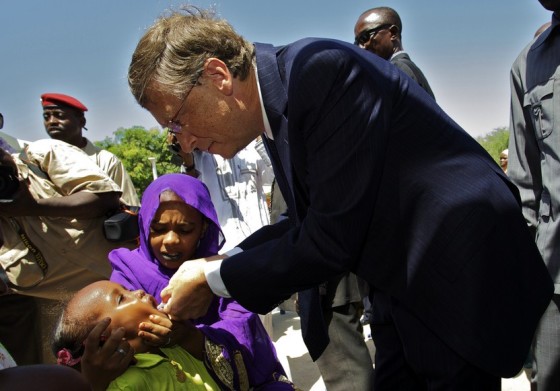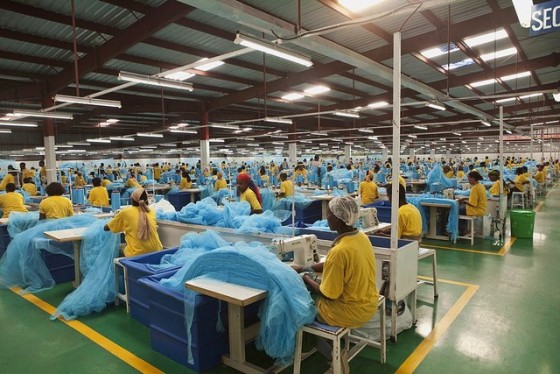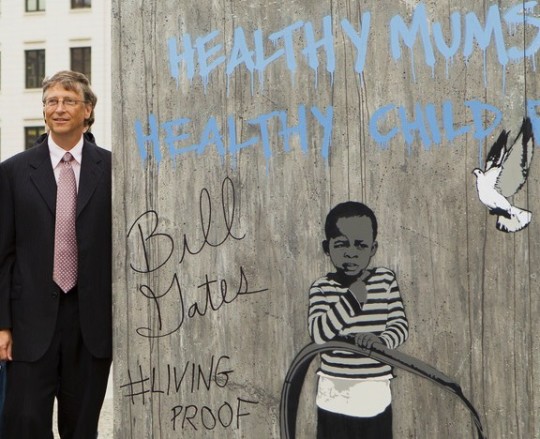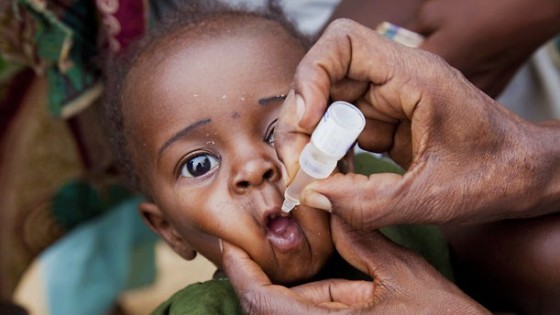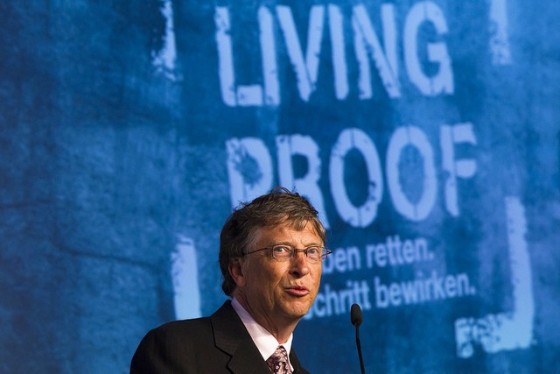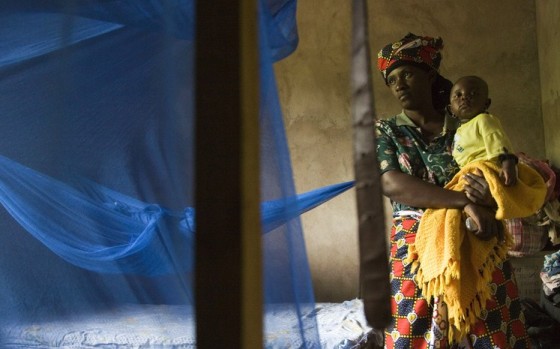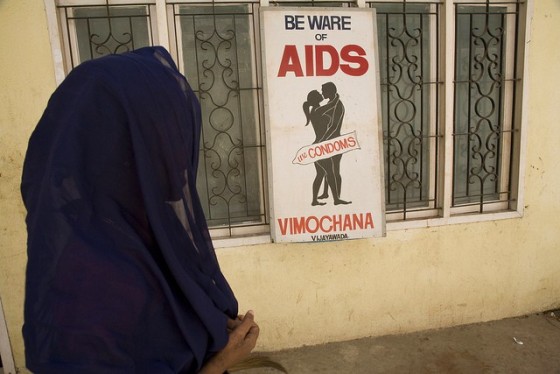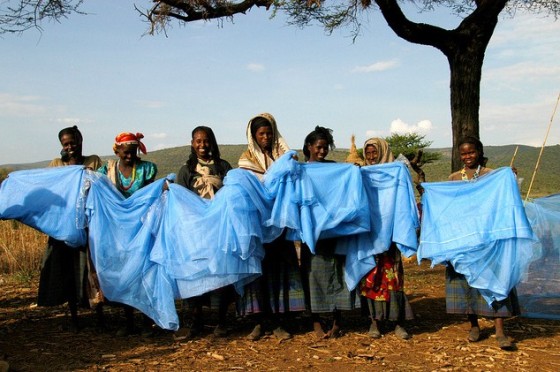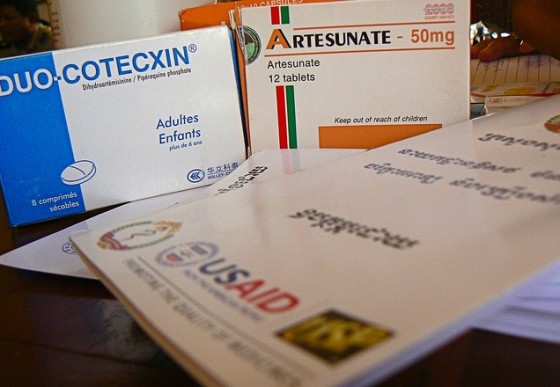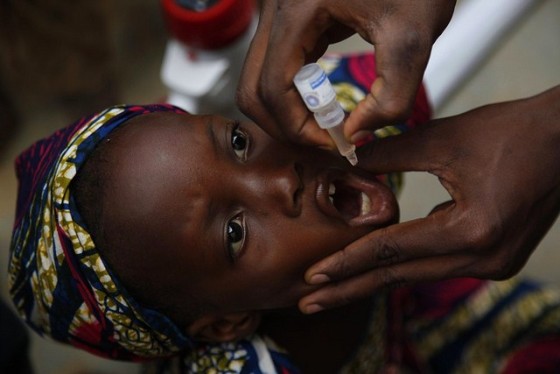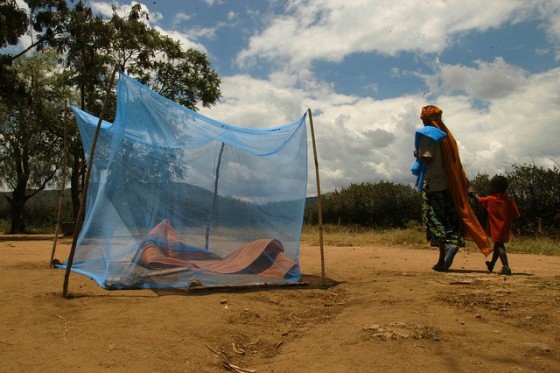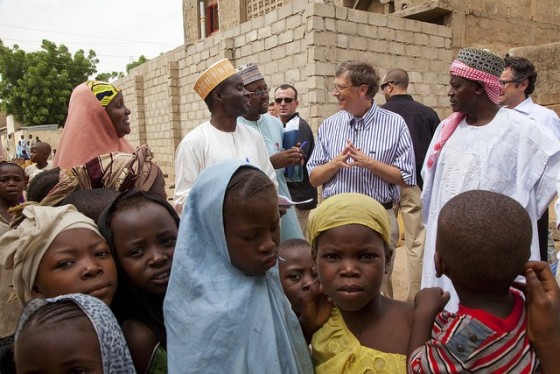Bill Gates, Big Pharma, Bogus Philanthropy
By Ruben Rosenberg Colorni
Many people admire Bill Gates for his intelligence, entrepreneurial spirit and, most recently, his philanthropy. That is all well and good, but we mustn’t forget that he is a relentless capitalist who, throughout his life, dedicated his efforts to only one purpose: making a ridiculous sum of money. Let us also not forget that corporations are, by law, required to do everything possible to maximize their profits and therefore, every single action they take should be viewed as a money-making scheme. Sometimes this means repairing or improving their image through seemingly charitable actions that are designed to allow them, in the long term, to exploit more people without scrutiny or resistance.
Putting aside conspiracy theories about Gates being a part of a global population-reduction scheme, it is not too far-fetched to say that there has been a systematic historical tendency to use the less developed continents (especially Africa) for non-consensual research to pioneer new money-making techniques disguised as development, and that Bill Gates could be a part of this. After all, Big Pharma is one of the most profitable industries on the planet, and it strongly relies on the enforcement of extensions of patents and intellectual rights for which Bill Gates is notorious from his work in Microsoft. Africa has been the place most severely affected by the strict patent rights enforced by transnational corporations with support from the International Monetary Fund – World Bank – World Trade Organization (IMF-WB-WTO) cartel.
There is also a huge body of documented evidence that the pharmaceutical industry has, for a long time and repeatedly, used vulnerable populations in the developed and developing world as guinea pigs to study disease and test new drugs (e.g. the Tuskegee Experiment, among many others). This is not limited to Big Pharma but applies to nearly every sector of the industrial capitalist economy which, by definition, is based on the exploitation of an underclass.
Having established these premises (I invite you to challenge them), let us analyze the facts:
Shortly before leaving Microsoft in June 2006, Bill Gates sold $58 million in shares; on November 2, 2012 he sold 5,500,000 shares for $27.95 a share, generating $153.7 million, and more recently, on April 25, 2013, he sold 12,605,492 shares for $390.4 million. These are but a few examples. According to the Security Exchange Commission, Bill Gates sold 90 million shares of Microsoft Corp. in 2012; he currently holds 591 million shares of this company, which amount to around 7% of the 8.4 billion total, and he continues to be its largest single stockholder.
Simultaneously Mr. Gates has invested in firms specializing in retail (Walmart), food and beverages (Coca Cola & McDonalds), energy and transportation (British Petroleum and Toyota) and Biotech (Nimbus Discovery and Foundation Medicine). But none of these investments match those he made in the pharmaceutical industry. Indeed, one of his first actions after withdrawing his shares from Microsoft when stepping down was to invest in the British Pharmaceutical giant GlaxoSmithKline (GSK). on September 9, 2002, Gates sold almost half a billion dollars of Microsoft stock. Around the same period, in the second half of 2002, he bought2.5 million shares of Eli Lilly, manufacturer of Prozac, and made other major investments in Merck and Pfizer. on May 17, 2002 the Bill & Melinda Gates Foundation (B&MGF) purchased shares of nine Big Pharma companies, valued at nearly $205 million. This is when we begin to see a shift of Gates’ personal investments to those of his foundation. This was an important step in convincing the rich to donate their personal fortunes to B&MGF, a sort of leadership by example to fool those who need their conscience stroked, or their image restored or improved.
As an investor in Merck & Co., Pfizer Inc., Johnson & Johnson and others, the Gates foundation shares financial interests with the makers of AIDS drugs, diagnostic tools, vaccines and other drugs. It should be recalled that Mr. Gates attained his demi-trillionaire status using a “nasty little monopoly-protecting trade treaty” called TRIPS: the Trade-Related Intellectual Property Rights rules of the WTO.
The B&MGF’s endowment comes mainly from Mr. Gates’ personal fortune and stocks in Berkshire Hathaway given to the Foundation by Hathaway’s CEO Warren Buffett. More recently, other extremely influential people have poured enormous sums into the B&MGF from their personal fortunes. The B&MGF recently decided to focus its efforts on Malaria and Polio: the two prime examples of the last piece to this magnificently intricate scheme. About $1 billion of Bill Gates donation/tax deduction was earmarked for research to find a vaccine to prevent malaria which is the number one killer in Africa.
The example of Malaria
Quite literally, hundreds of studies, papers and analyses have determined that the best way to reduce transmission and mortality from infectious diseases such as Malaria and Polio is to educate a population and raise its standard of living. Eritrea, for example, managed to reduce its Malaria infection rates by 80% by organizing public-education campaigns on nutrition and disease prevention, providing free insecticide-treated mosquito nets in areas where Malaria is endemic, establishing community-based medical clinics where the population can get free blood tests, and finally filling in mosquito breeding sites and/or spraying insecticide on those areas (I’m not normally a fan of insecticides, but this is meant to prove a larger point).
These simple public-health practices have resulted in the biggest breakthrough in Malaria mortality prevention in history, and to date I have yet to find a single story about this in any mainstream media outlet. Such approaches were also widely adopted across Europe a century ago: a process which brought about the complete eradication of these exotic infectious diseases from the continent. It should also be added that Eritrea, through the already established public healthcare system, has been the only African country to reduce its HIV/AIDS infection rates effectively (by 40% over a decade); this was done through a national sex-education and condom-distribution program.
Bill Gates is a pretty smart guy. So why did he embark on a massive vaccination campaign when the same funds could have been invested in genuinely sustainable community-development and public-health programs? Because that does not make money.
The B&MGF invested one billion dollars to develop a Malaria vaccine produced by GSK, in which (you guessed it) Bill Gates holds large numbers of shares and on which he exerts considerable influence. GlaxoSmithKline recently had to settle for $3 billion to resolve criminal and civil liability charges related to illegal drug marketing and withholding of information about health hazards associated with its diabetes drug Avandia, and in 2012 an Argentinian courtfound GSK guilty of “experimenting with human beings as well falsifying parental authorizations so babies could participate in the vaccine trials conducted by the laboratory from 2007 to 2008.”
The GSK Website claims that “When administered along with standard childhood vaccines, the efficacy of [the malaria vaccine] RTS,S in infants aged 6 to 12 weeks (at first vaccination) against clinical and severe malaria was 31% and 37%, respectively, over 12 months of follow-up after the third vaccine dose.” Sounds swell right? However, the site also mentions (and notice how they try to spin this to their favor) that “insecticide-treated bed nets were used by 86% of the trial participants, which demonstrated that RTS,S provided protection beyond existing malaria control interventions.” The tests also showed a decreased efficacy and were described by many as a “flop.” Worse, a considerable body of evidence shows that Malaria “vaccines” actually increase the virulence of Malaria strains. But even to reach the efficacy of “a flop”, the Malaria vaccine must be taken with an additional drug. The B&MGF and GSK failed to mention that they would make a fortune from this catalyst drug during the huge publicity and marketing campaign they made from the fact that they would donate the vaccine.
Polio is another case
In India, in many areas where Polio was nearly eradicated and the B&MGF engaged in vaccination campaigns, Polio is now rampant. This was due to the use of an active Polio vaccine called Oral Polio Vaccine (OPV), which is based on the oral administration of attenuated live polio virus and is banned in most western nations because recurrent shots of it actually increase the development of more aggressive polio strains and their mutation into deadly forms. Subjects in India were given up to 10 injections of this vaccine instead of the one to two of the Inactive Polio Vaccine (IPV, which, as the name implies, uses an inactive polio virus) used here in Europe and in the United States. The new strain’s outbreak of disease, however, has “non-polio” (no, I’m not kidding) in its name – “non-polio acute flaccid paralysis” (NPAFP) – in an attempt to deflect the responsibility and to blur the link between the B&MGF and the outbreak, despite the fact that the strains are nearly identical.
The U.S. Army’s (the largest single consumer of vaccines worldwide) Basics manual states: “A single dose of trivalent OPV is administered to all enlisted accessions. Officer candidates, ROTC cadets, and other Reserve Components on initial active duty for training receive a single dose of OPV unless prior booster immunization as an adult is documented.”
It is additionally strange that, despite professing itself to be a pioneer of global health, the B&MGF holds significant shares of some of the most “unhealthy” companies on the planet, responsible for millions of cases of obesity and diabetes such as McDonald’s (9.4 million shares representing about 5% of the Gates’ portfolio), and Coca-Cola (with more than 15 million shares, over 7% of the Foundation’s portfolio, not counting Berkshire Hathaway holdings). It is also strange that B&MGF would have invested enormous amounts of money in those pharmaceutical companies that stopped the shipment of low-cost AIDS drugs to Africa, despite professing that they want to provide medicine to one million people by the end of the decade. Too bad Gates did not specify that he meant his medicine: the one from the companies in which his millions are invested.
The Bill & Melinda Gates “Foundation” is essentially a huge tax-avoidance scheme for enormously-wealthy capitalists who have made billions from exploiting the world’s people. The foundation invests, tax free, money fr0m Gates and the “donations” from others, in the very companies in which Gates owns millions in stocks, thus guaranteeing returns through both sales as well as intellectual-property rights. To add insult to injury, the system perpetuates the spread of disease rather than aids in their eradication, thus perpetually justifying his endeavors to “eradicate” them (solving a problem they are creating).
Would the world be better without the B&MGF and without philanthropists like Bill Gates? This is a hypothetical question that would require a completely different socioeconomic arrangement than the current one and that cannot be answered with complete certainty. It is almost certain that if enormously wealthy individuals and firms were held accountable for their actions instead of being allowed to “whitewash” them in misleading and dishonest philanthropy, the world would be better. It is almost certain that if philanthropy was genuine, and not designed as a tax-avoidance scheme and one in which “donations” serve as investments into the very firms in which the donors have enormous stakes, the world would be better. It is quite certain that if the enormous investments (or “donations”) had been focused on community-based nutrition programs, public-health programs and sustainable enterprises, the world would be better.
Editor’s Notes: Ruben Rosenberg Colorni is a writer, fourth-year student of International Public Management at The Hague University, and an activist in a wide variety of causes ranging from the Palestinian occupation to environmental degradation. Although born in Italy, he has also lived in Indonesia, Thailand, the United States, the United Kingdom and currently lives in The Hague, the Netherlands, with his cat. This essay was inspired by Dady Chery’s recent article on humanitarian imperialism in News Junkie Post and started out as a commentary on the article. All photographs by the Gates Foundation.
